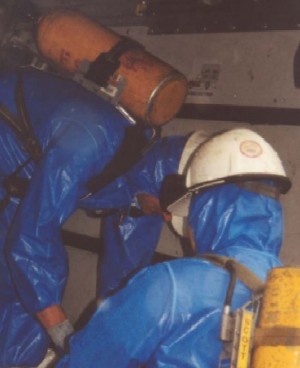
Jennie Inkster, safety coordinator for the City of Kamloops, completed a set of written emergency procedures for dealing with chlorine leaks. Then she tested them with the local fire department during NAOSH Week 2011. Kamloops earned three NAOSH Awards: in Best New Entry at the national level and in BC’s Local Government category and Best Presentation of Theme.




